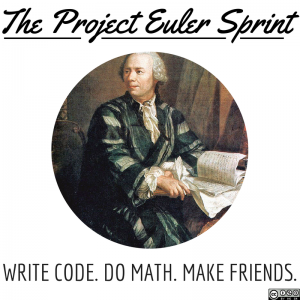So, Content Marketing Conference (CMC), the largest gathering of content marketers on the planet, started yesterday with amazing keynotes from some of the best digital marketers out there and thematic sessions to help in the planning and creation phases of your content marketing strategy.
I’ll dive into these keynotes and sessions to bring the highlights from this great first day of the event!
“As AI advances what’s possible with technology, a next generation of content marketers is emerging” – Paul Roetzer
Paul Roetzer’s (Marketing AI Institute founder and CEO) keynote was all about the future of writing. He laid out the vision and opportunity for next-gen marketers who use AI to deliver the personalization and experiences modern consumers expect; unlock previously unimaginable creative possibilities; and drive efficiency, revenue growth, profits, and societal impact that leadership demands.
In his presentation, he shared an excerpt from his book Marketing Artificial Intelligence: AI, Marketing, and the Future of Business (co-authored with Mike Kaput): “Next-gen marketers know that in order to deliver the personalization and experiences modern consumers expect, marketing must become smarter. It must become marketer + machine.”
Paul believes that there will be three types of businesses in every industry: AI Native, AI Emergent and Obsolete. To be successful in this landscape, you need to choose to be one of the first two options.
AI can go a long way to reducing costs and driving revenue when you have the right data and the right use case, but, according to Paul, it does not replace the need to develop valued products and services, create amazing client experiences, build a strong brand, and continually invest in your talent and culture.
Nevertheless, the competitive advantages gained by AI Native and Emergent companies, which also solve for strong business foundations, will be too great to overcome in the coming years.
At the end of his keynote, Paul presented the three steps for scaling AI: think strategically, view data as essential to success and educate and engage leadership
“If you can improve a click rate you can improve the entire process” – Andy Crestodina
This keynote presented by Andy Crestodina (co-founder and Chief Marketing Officer of Orbit Media) broke down the best practices for B2B lead generation learned from hundreds of website projects. From social proof to CTAs, videos to contact forms, attendees learned the options for UX design, and how they work together to align with the psychology of readers and fans.
Using the concept that marketing strategy is a chain, he divided the marketing funnel into 5 steps. These steps were discussed one by one and were exemplified using what he called “best practices,” but emphasizing that best practices are only hypotheses. According to Andy, you should test them to see if they work for your business.
Although considering that the most important steps in this “marketing chain” are the traffic source and the thank you page, he provided a good explanation about how to improve a thank you page, and how to choose a good and direct CTA that connects to your product or solution. Also, he presented a page structure to help you define your content into informational, commercial, and navigational areas.
He emphasized that an important aspect of building a search-optimized site structure is having good communication and deep collaboration between the sales and marketing teams.
It’s crucial that both teams are aligned when answering questions like what is the biggest challenge the product is hoping to solve, what questions is the salesperson sick and tired of answering, and what questions should people ask about the product or service, but don’t.
“When it comes to outsourcing and insourcing, the most successful is a combination of both. Scale your team with talent on demand” – Diego Gomes
Diego Gomes (co-founder and CEO at Rock Content) participated in a fireside chat with Byron White (founder and chair of Content Marketing Conference and WriterAccess). It was a really relaxed conversation about Diego’s career and his thoughts about the evolution of digital marketing and what he hopes for the future.
Byron asked Diego how Rock Content managed to grow so fast since its foundation in 2013. He answered that the company started very early in Brazil’s content marketing industry, so it could grow along with the expansion of content marketing itself. “We managed to get customers of all sizes. We started offering content in Portuguese, but some customers began demanding content in other languages. That’s when we expanded to Latin America offering content in Spanish and, now, we are in North America offering content in English too.”
Sharing the same vision about AI as Paul Roetzer, Diego believes intelligent technology can make us more productive. “AI can enhance us. I see AI playing a key role in marketing, but it’s not going to replace humans. It’s going to make us able to do more.”
When asked about the future of Rock Content and its challenges, Diego said that as marketing evolves in a very fast-paced way, companies need to adapt. “I want to keep building and improving our huge community of global talents and evolving our technology to empower our customers”.
“Despite the recession, digital marketing continues experiencing a massive growth” – Rand Fishkin
Marketing leaders and practitioners alike are often asked: what’s next? What do we need to do to future-proof our marketing? And (possibly everyone’s least favorite), what about the latest trend, XYZ? Some trends are all smoke, no substance.
But others may indeed be meaty, relevant, and worthy of investment. In his presentation, Rand Fishkin (co-founder and CEO of SparkToro) dove deep into six of the biggest trends in the marketing field, pulling back the curtain on what might actually change the marketing landscape, and where you don’t need to give a second thought.
Here are the six trends shared by Rand in his keynote speech:
The Death of Social Networks and rise of the Entertainment Networks
According to Rand, TikTok is an example of a very popular entertainment network, growing fast, but facing Western regulation. Entertainment networks will require different kinds of content investments and different forms of advertising. Brands need to expect to invest, fail, learn, and try again. “It is not just because TikTok is a success your company needs to be there. Be where your audience is.” For example, Twitter is still growing and can be a good opportunity for brands.
Build a Flywheel that works for you
Rand bets on the Marketing Flywheel as a model that brands can use to improve their results. He shared an example of this model to help marketers get started.
Government Regulation, Privacy Issues, & Antitrust Impacts
For Rand, Apple has had a major impact on this matter. They are investing against the collection of Apple users’ data by other companies, but internally they track their consumers’ data. Legally, there’s a lot happening in the US and other countries where governments are seeking to increase privacy regulations. AdTech will probably still find a way to continue tracking behavior, though. Brands need to start working with inferred connections, as indirect tracking and implied attribution are on the rise.
Growth vs. Profitability in a Recession and the macroeconomic impact
The recession is expected to be much milder than in 2001 and 2008, according to Rand. But brands need to understand how to prioritize marketing. It is important to know how your team prioritizes growth vs. profitability. “Investing in organic strategies (like content marketing) is a good way to keep growing.”
Platform preferences and zero-click content
“Don’t let people click out” is what social media platforms bet on, so content without links performs better. It is important to provide what these platforms want: zero-click content that keeps users on the platform, and engages the audience in different formats. It’s important to find the right match.
The End of (accurate) Marketing Attribution
Brands are reducing ad budgets and investing more in branding. Brands need to start measuring “untrackable” marketing metrics like awareness, interest, visits and familiarity lift. Additionally, they should be careful about who is getting credit for referring visits, conversions, and LTV by channel. You are almost certainly investing much more in paid traffic than organic. You need to invest more in organic.
Planning and Creation Sessions
Alongside the live keynotes, attendees had the opportunity to watch recorded sessions aimed at Planning and Creation, the foundations of a great content strategy.
At the Planning Sessions, pro content marketers got to the stage to share their expertise on how to build a solid base for your entire strategy.
The topics were:
- How to Generate 100+ Effective Content Ideas
- The Perfect Funnel Blueprint
- Don’t Be a Bland Brand: 7 Snappy Ways to Get Real for Better Results
- Not Thought Leadership Marketing, Thought Followship Marketing
- Building Your Thought Leadership Content Engine
- Cut Through the Fluff to Make Your Content More Authentic
- Pump Up Your Content Power
- Become the #1 Authority in Your Industry for $1 a Day
- Pay Attention! Getting, Keeping, and Using Attention
- How to create a behavioral, data-driven content strategy that converts
At the Creation Sessions, it was time to get hands dirty! In this session, speakers gave the audience the best tips to create content that engages the audience and connects to their entire marketing strategy.
The topics of these sessions were:
- Don’t Ask, Give! How to Create Winning Influencer Partnerships
- Agile Marketing: The Ultimate Co-Creation Framework
- How to Create Non-Robotic Captivating Content that Ranks Quickly
- A Checklist for Humanizing Your Digital Content
- 40 as the New 30: How to Drive Impact Across Generations
- How to Tap Humor to Build Empathy and Understanding
- 10 Creative Content Ideas You’ll Want to Try Today
- Your Product Experience is Content Too
- How to Publish a Year’s Worth of Content From One Research Study
- How to Write Copy That Actually Converts
Until the end of the event, people can attend recorded sessions divided into tracks covering the five content marketing pillars of planning, optimization, creation, distribution and performance.
Content Marketing Conference 2022 will continue until Friday with more keynotes from the biggest digital marketing names and thematic sessions to help you build the perfect content marketing strategy for your brand.
If you haven’t registered yet, you still have time! Just access this link to get your FREE 3-day ticket!
[ion_script src=”https://ionfiles.scribblecdn.net/scripts/ionizer-1.4.2.min.js” hash=”eyJ1cmwiOiIvL2ludGVyYWN0aXZlLnJvY2tjb250ZW50LmNvbS90aGViZWF0LWJhbm5lcj9faW9uX3RhcmdldD1lbWJlZC0xLjAiLCJpZCI6Il9pb25faW9uaXplcl8xNzA2NzE5NDQ4MTI4IiwiZnVsbFNjcmVlbiI6ZmFsc2V9″]







